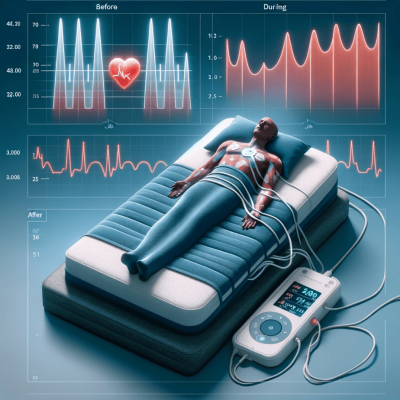In today?s news, we will look into the researchers’ warning about the potential negative effects of high-potency cannabis on mental health. Additionally, a growing number of states have implemented rules allowing students to take an excused absence if they are nervous, depressed, or need a day to “recharge” as a result of the increase in child mental health issues over the previous few years. Meanwhile, the devastation caused by Hurricane Ian is making the need for mental health services in Southwest Florida even more urgent.
Table of Contents
ToggleHigh-potency cannabis poses concerns to mental health, according to researchers
Original Source: Researchers warn of mental health risks of high-potency cannabis
Beatriz Carlini browses local cannabis businesses’ websites to discover what she needs.
Her screen displays a yellow sludge that looks like raw honey or “Cake Batter”
Dab is a highly concentrated form of cannabis made from cannabis plants and THC. It’s evaporated and inhaled using a bong-like contraption with a blow torch.
Cake Batter’s powerful. It says 65% THC.
The product’s THC percentage is “quite low” in the legal realm of highly strong compounds, or dabs, says Carlini. Some Washington dabs contain 90% THC, while a regular cannabis flower has 20%.
Physicians and researchers in the Pacific Northwest consider dabs and other highly concentrated narcotics as a growing concern to public health, especially among young adults and teenagers. Lawmakers contemplate a THC cap or greater tax for powerful items. These products are unlawful for people under 21, say shops and suppliers. They caution that banning or taxing specific products could generate an illegal market that would be hard to monitor and control.
In 2014, when Washington legalized recreational cannabis, extracted cannabis, including concentrates, made up 9% of the market. Washington State Liquor and Cannabis Board 2020 data shows concentrates at 35%.
Carlini: “Product development trumped science and policy.” Nobody knew we legalized it.
Industry leaders say more potent items are part of a market’s natural evolution.
Burl Bryson, executive director of Seattle’s Cannabis Alliance, said those goods were envisioned. In established markets, concentrates will replace flower.
The federal government strictly regulates cannabis research, thus wax, resin, and shatter research is limited in the U.S.
Emerging evidence from adult research links high-potency THC to an elevated risk of psychosis and a heightened likelihood of developing psychosis years earlier than expected in persons at risk for the condition. Psychosis symptoms include delusions and hallucinations.
While it’s unclear how high-potency THC impacts teenagers, evidence ties frequent cannabis usage to psychotic symptoms. Anecdotally, pediatricians report an increase in teens with cannabis hyperemesis syndrome, psychotic episodes, confusion, and acute vomiting.
Policymakers must decide if and how to regulate such products.
Vermont and Connecticut are the only states to cap THC concentrations at 60%. California may require cannabis manufacturers to flag potential mental health hazards.
If Washington regulates THC concentrates, it will be a test case for cracking down on the legal cannabis sector. In 2021, lawmakers gave Carlini and a group of experts $500,000 to explore potential regulatory measures. Their report was due to the Washington State Health Care Authority on Sept. 30 and will be released publicly in December.
Rep. Lauren Davis, D-Shoreline, introduced two THC-cap legislation that failed to get out of committee in prior legislative sessions; one capped THC concentrates at 10%, the other at 30%.
Davis plans to propose new legislation based on the researchers’ findings, calling the state’s cannabis sector a “failed experiment.”
Researchers struggle to communicate. Misinformation campaign ‘Reefer Madness’ and the war on drugs created popular mistrust about anti-cannabis discourse.
Emerging data worries scientists.
Teens in the Northwest are increasingly using dabs and other alternatives to smoking cannabis. 33% of Washington 12th-graders who use cannabis dab, according to the 2021 Healthy Youth Survey. In Oregon, youth dabbing rose from 26% to 36% from 2017-2019.
Cannabis-related poison center calls are rising while overall calls are falling. People were more likely to call poison centers after using dabs than plant-based cannabis.
Julia Dilley, a UW epidemiologist, presented the data during a September symposium attended by more than 150 experts.
Nearly everyone interviewed said additional research is required on high-potency drugs and teenage mental health. Factors that contribute to serious mental diseases are varied and can build over years.
Existing studies don’t involve patients utilizing high-potency products: Denise Walker, a UW clinical psychologist and research professor, says most study is on items with 10% THC. No studies indicate a direct causal association between high-potency THC and psychosis because such an experiment on humans would be immoral.
“The industry has exploited this as an excuse to do nothing,” Carlini added, “but everything we know scientifically indicates this is a ticking bomb.”
Pediatricians have seen what occurs when kids with low THC tolerance try powerful products. Some have psychotic episodes or temporary cognitive impairment, such as problems with motor activities, locating words, or remembering what was just spoken. Others with a tolerance for high-THC products seek care after vomiting, dehydration, and stomach pain.
“Are people noticing or are we blowing smoke? I understand. Dr. Cora Breuner, a UW pediatrics professor and Seattle Children’s hospital physician, says she’s recommending more adolescents for cannabis use disorder than five years ago, but demand is surpassing resources.
Dr. Beth Ebel said some teens are so high when they come at the ER that they have a TBI.
Almost a third of the 12 and older youngsters in Harborview’s trauma department had cannabis-related injuries, says Ebel.
Now what?
State regulations on concentrates could encourage a more dangerous clandestine market. Policymakers are considering imposing age limitations or marketing restrictions on high-potency products, boosting taxes, introducing THC caps, and establishing public health awareness campaigns.
Industry and consumer experts fought Davis’ THC cap plans, arguing that increased rules will harm public health since unregulated products may contain pesticides or harmful ingredients.
Washington CannaBusiness Association executive director and lobbyist Vicki Christophersen told The Seattle Times, “Our main priority is a safe and quality-controlled marketplace” A return to prohibition threatens an open, transparent sector and favors the illegal market.
Ramsey Doudar, a cannabis dispensary worker and consumer advocate, says retailers currently prevent anyone under 21 from buying cannabis.
Next, use some of the cannabis industry’s $1 billion in tax money for education and prevention, he added. Adults who supply or sell cannabis to kids should be punished, he said.
Because this is uncharted area for legislators, there’s “enormous ambiguity” about the correct approach, said Carnegie Mellon University professor Jonathan Caulkins, who researched Washington’s cannabis market with RAND.
If the state wishes to regulate, it should “start small” until it determines what limits may be implemented without creating an unlawful market. “We’ll see if Washington state has the backbone to enforce a ban.”
Child mental health days are now permitted in more states
Original source: More states are allowing children to take mental health days
With kid mental health problems on the rise, more states are allowing pupils to have excused absences if they’re anxious, depressed, or need to “recharge.”
A dozen states currently allow adolescents to miss school for mental health reasons. Others are considering changing school absence regulations.
This recognizes a worrying trend. In December 2021, U.S. Surgeon General Vivek H. Murthy declared a mental health crisis for American youngsters, noting “an increasing proportion” of youths battling with “helplessness, sadness, and suicidal ideas.” According to the Children’s Hospital Association, between March and October 2020, the percentage of children visiting the ER for mental health difficulties grew 24% for ages 5 to 11 and 31% for ages 12 to 17.
According to the CDC, teen suicide rose 31% from 2019 to 2020.
Christine M. Nicholson, a clinical child psychologist in Kirkland, Wash., promotes mental health days. She said youngsters occasionally need to miss school, go hiking, or watch a movie at home.
“Mental health should be equally valued as physical,” she stated. “The kids need a break”
?The pandemic’s isolation didn’t help,? said California Democrat Anthony Portantino, who introduced a 2021 law. The bill doesn’t say how many days a child can miss. Portantino’s brother Michael committed suicide at age 52 in 2010. He hopes other families can escape the same tragedy.
Proponents say such measures are long needed and can help parents and children destigmatize mental health. California, Illinois, Maine, Virginia, Colorado, Oregon, Connecticut, Arizona, Nevada, Utah, and Kentucky offer mental health days.
Mike Winder, a Utah state lawmaker who supported a 2021 mental health bill, said it “makes a significant statement” Winder introduced the law after talking to his mentally ill daughter. The bill does not limit the number of days a youngster can take for mental health, he said.
How does taking a “mental health day,” which Americans traditionally utilize to play hooky, help mental health?
Barb Solish, director of Youth and Young Adult Initiatives for the National Alliance on Mental Illness (NAMI), supports mental health days.
?School rules that acknowledge mental health as an acceptable absence cause can help students care for themselves,? Solish added. “If you have a fever, you’re not paying attention, right? Not learning. If you’re anxious, you’re not learning.
In jurisdictions with such policies, parents must sign a note excusing their child. Some states, like Connecticut, limit the amount of days a child can take off, but others, like California, do not.
Missed schoolwork must be made up. The policies don’t say how the days off can be spent, whether for sleeping or counseling. Some say that could encourage abuse. Portantino scoffs.
“We don’t criticize a parent’s want to keep Johnny home with a cold. So we need this bill. We must correct this reputation. Physical and mental wellness aren’t differentiated. If your child is sick, he said.
Most laws require a parent to produce a note like a physical sickness.
Some worry that mental health days aren’t the best solution.
Daniel Buck, editor in chief of the education newsletter Chalkboard Review, said in the National Review that school mental health days “may ease acute suffering but foster practices that worsen anxiety and depression over time.” He advised teaching kids avoidance instead of how to cope with real concerns like too much social media. By promoting mental-health days, we educate children to let the world determine their emotions instead of self-regulation, he writes.
What if we built resilience back into schools? What if we taught pupils Marcus Aurelius’ stoicism and Aristotle’s virtues so they could confront life’s challenges? These include emotional awareness practices like regular introspection, chats with loved ones, or scheduled, well-timed relaxation.
Solish said there’s a narrow line between leaving school to feel better and not studying for an exam. Parents should find out why a youngster wants time off. If a youngster asks for or takes too many sick days, it may be a sign that they need professional treatment.
Solish: “Mental health days won’t fix the juvenile mental health epidemic.” It’s a good start.
Dave Anderson, a New York clinical psychologist who researches mental health in high-need school systems, agrees.
“There are too few [mental health] providers, too few online resources, too few school counselors serving too many students, and much too little knowledge given to educators about how to support kids,” he said. According to a 2022 APA report, barely 4,000 of the more than 100,000 clinical psychologists in the US are child and adolescent clinicians. “School psychologists are also in low supply,” the report concluded.
Jack Ramirez, 19, of Spring Township, Pa., said mental health days might save lives.
As a high school intern, he persuaded Pennsylvania Sen. Judith Schwank (D) to draft a mental health days bill in 2020. Still hurting after a classmate’s suicide, he said. Ramirez believes the student would be alive if he could have stayed home to care for his mental health.
The bill to grant two excused mental health days per semester is currently in committee.
Ramirez, a sophomore at Rutgers University in New Jersey, has grappled with loneliness and anxiety. High schoolers feel lonely and grade pressure. They’re rivals. We’re ignoring a scary situation. ? Pressing pause on many of our problems is crucial if we want to save lives and find answers.
Utilize’mental health’ days
Should you tell your kids to slow down sometimes? If so, how can you maximize it?
Barb Solish, director of Youth and Young Adult Initiatives for the National Alliance on Mental Illness, says “there’s no perfect mental health day” (NAMI). Intentionality helps.
Solish’s ideas for maximizing a “mental health day”:
You should: Ask open-ended inquiries about their connections, experiences, and vacation needs. Then listen.
Avoid schoolwork and social media. Solish: “Those are stressors for youngsters.”
Walk, bake, draw, or explore nature to relax. ?Whatever brings your kid back to center is a terrific thing to do,? added Solish. Should parents let kids watch TV, play video games, etc.? Solish: “Nothing is off-limits.” “Be thoughtful about what will help.”
Solish: Don’t force kids to talk about feelings all day. You can discuss mental health.
When you need help: If your child is irritable, sleepless, melancholy, lacks ambition, or consistently asks to stay home from school, you may require mental health care, says Dave Anderson, a clinical psychologist at the Child Mind Institute in New York. Pediatricians, school counselors, and family doctors can provide recommendations.
Mental health issue in SWFL is worsened by Hurricane Ian
Original source: Hurricane Ian intensifies mental health crisis in SWFL
Hurricane Ian’s havoc in Southwest Florida increases the demand for mental health treatment.
NAMI Collier County’s Warm Line Center calls soared during the hurricane and continue to rise.
With aid from Southwest Florida organizations, the agency staffs the statewide Warm Line, a peer-run hotline that offers emotional support.
After the pandemic, the hurricane amplified mental disease stressors and triggers.
Beth Hatch, CEO of NAMI Collier, said the trauma shows the need for their services. We’re meeting the community’s immediate mental health needs.
Warm Line is open 4-10 p.m. weekdays at 1-800-945-1355.
The National Suicide Hotline is 988.
The team also helps with cleanup, FEMA applications, immediate basic needs, resource connections, support groups, and peer support.
Monday through Friday, 9:30 a.m. to 3:30 p.m., Sarah Ann Center. Air conditioning, peer support, food pantry, wardrobe closet, coffee, shower, and laundry. Naples, 6324 Trail Blvd.
Summary of today?s mental health news
Overall, we discussed why physicians and researchers in the Pacific Northwest consider dabs and other highly concentrated narcotics as a growing concern to public health, especially among young adults and teens. Emerging data worries scientists like 33% of Washington 12th-graders use cannabis dab, according to the 2021 Healthy Youth Survey. In Oregon, youth dabbing rose from 26% to 36% from 2017-2019. Cannabis-related poison center calls are rising while overall calls are falling. People were more likely to call poison centers after using dabs than plant-based cannabis.
Also, there are already laws in existence in a dozen states that let children take time off for reasons other than their physical health. A few others* are thinking about altering the policies regarding absences from school.
Finally, as a result of the destruction caused by Hurricane Ian, there is an increased demand for mental health treatments in Southwest Florida. It has been reported by NAMI Collier County that the number of calls to the Warm Line Center surged during the storm and continues to go up even now.








